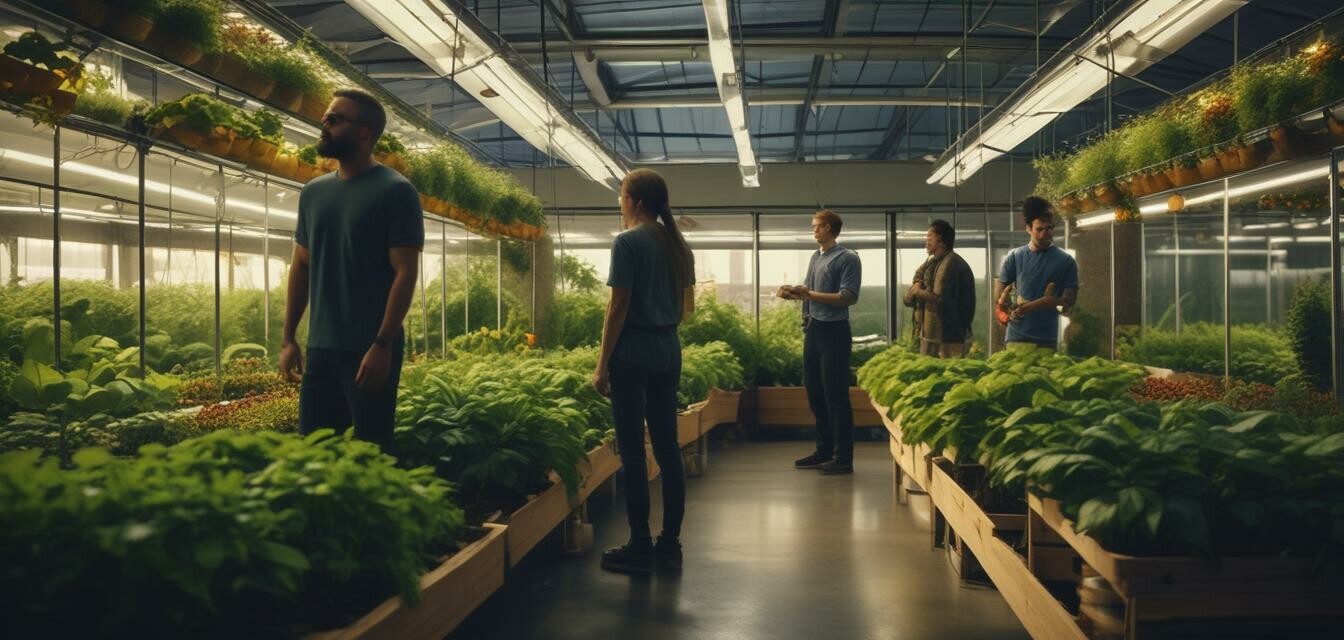
Community Hydroponics: Growing Together in 2025
Key Takeaways
- The rise of community hydroponics fosters local food systems.
- Community involvement enhances social bonds and educational opportunities.
- Gardeners are learning about sustainable living practices through direct engagement.
- Hydroponic systems are suitable for urban settings, maximizing space efficiency.
- Innovative technologies are shaping the future of community gardening.
As we move towards 2025, communities across the globe are transforming unused spaces into thriving hydroponic gardens. This phenomenon not only provides fresh produce but also strengthens community ties and promotes sustainability. Let's explore the rise of community hydroponics and its impact on local food systems and education.
The rise of community hydroponics
Community hydroponic gardens are cropping up in urban neighborhoods, vacant lots, and rooftops. These gardens are designed to deliver fresh food while utilizing small spaces efficiently. The growing popularity is due to several pivotal factors:
- Space Efficiency: Hydroponics allows for greater yields in smaller areas than traditional soil gardening.
- Year-Round Harvests: With control over environmental conditions, gardening can continue throughout all seasons.
- Reduced Carbon Footprint: Local gardens minimize transportation emissions by providing food closer to where it's consumed.
City Initiatives and Support
Many cities recognize the potential of community hydroponics, introducing policy initiatives that support urban gardening. Local governments often provide:
- Grants and funding for hydroponic projects.
- Resources and workshops aimed at teaching community members about hydroponics.
- Collaboration with local businesses for sustainable practices.
Benefits of community hydroponics
Community hydroponics has various benefits that extend beyond just food production. Here are some key advantages:
Pros
- Strengthens community ties through collaboration.
- Encourages healthy eating habits by providing fresh produce.
- Acts as an educational platform for sustainable practices.
- Improves local economies through job creation.
Cons
- Initial setup costs can be high.
- Requires knowledge and skills in hydroponics for success.
- Potential for community conflicts over space allocation.
Community involvement and education
Education is integral to the success of community hydroponics. By involving local schools, organizations, and individuals, communities can cultivate knowledge and skills around sustainable living. Activities include:
- Workshops: Regular workshops can help teach families how to manage their own hydroponic systems.
- School Projects: Schools can integrate hydroponic gardening into their curriculum, offering hands-on learning experiences.
- Community Events: Organizing events where residents can share their experiences and learn from each other fosters a spirit of collaboration.
Impact on local food systems
Community hydroponics significantly impact local food security and accessibility. By increasing the availability of fresh produce, these gardens reduce dependency on large, commercial farms. In many urban areas, residents can now enjoy:
| Aspect | Traditional Farming | Community Hydroponics |
|---|---|---|
| Space Requirement | Larger plots of land needed | Compact systems fit into smaller areas |
| Growing Seasons | Seasonal constraints | Year-round production |
| Environmental Impact | Higher carbon footprint | Lower emissions, local sourcing |
Future of community hydroponics
Looking ahead, several trends are shaping the future of community hydroponics:
- Smart Technology: Sensors and automation will enhance efficiency and reduce labor.
- Increased Collaboration: Partnerships with local businesses can further promote sustainability.
- Green Infrastructure: Cities may invest in more urban gardens to improve air quality and aesthetics.
Conclusion
Community hydroponics is cultivating more than just vegetables; it's nurturing relationships, educating citizens, and fostering a deeper understanding of sustainable practices. As we approach 2025, the role of these shared gardens will continue to evolve and influence food systems globally.

